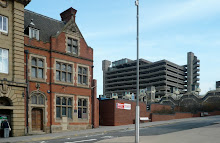
WEDNESDAY NOVEMBER 28th 7.00 pm
1/9 unosunove arte contemporanea
IS PLEASED TO ANNOUNCE THE EXHIBITION
BALANCE
curated by RAFFAELE GAVARRO
Exhibited artists
Kuba Bakowski Haris Epaminonda James Hopkins
Carlos Irijalba Jaime Pitarch Matt Stokes
It is difficult to underestimate the importance of the concept of
balance in our lives. We only have to consider the manifold
ways in which it is used in everyday discourse as an indication
of a wise way of looking at things: “to be balanced”, “to keep
your balance”, but also “a balanced judgement”. These
examples need little explanation.
But the term balance also has a more inconventional meaning,
indicating the capacity to remain uncertain, a refusal to apply
a single signifance to the multiplicity of meanings which make
up our everyday reality. When balance becomes the capacity
to play with double, triple or multiple meanings, aimed at
revealing the the less visible nature of things, words and our
experiences of life.
Balance is an exhibition which explores the subtle liminality of
the word, balanced on a line which is as much physical, as
mental and conceptual.
The artists invited to exhibit at Balance zigzag back and forth
across this line continously.
Kuba Bakowski (born 1971 in Poznan, Poland and currently
resident in New York) examines the delicate balance between
reality and its alteration. In Balance, Bakowski presents a
series of lightboxes from his recent series Ursa Major. His idea
unfolds in a series of photographic images in which groups of
seven people, holding light bulbs, recreate the shape of the
constellation. Beside this will be Untitled Installation with
globe (2006), in which an inflatable globe sits at the centre of
an air current created by ten small fans.
Haris Epaminonda (born 1980 in Nicosia, Cyprus and
currently resident in Berlin) moves between the real and the
virtual, challenging the viewer’s ability to uncover limits and
openings. In Balance, Epaminonda presents the videos
Elapsed and Tarahi II. Both of them are furnished with
soundtracks which highten the idea of temporal suspension
evident in the landscape of Elapsed and the characters of
Tarahi II.
James Hopkins (born 1976 in Stockport, England and now
resident in London) pushes the idea of balance to the
threshold of illusion. Transformed objects, installations and
distorted perceptions form his linguistic ambiance. In Balance
Hopkins presents a series of installations and of manipulated
and altered objects, as well as a photo, Mysteyspot, all of
which are dedicated to the various declensions of the term
equilibrium.
Carlos Irijalba (born 1979 in Pamplona and currently resident
in Madrid) works with varied media, entirely transforming
objects and creating images which work on the modification
of perception. In Balance, Irijalba presents a number of
photographs from the series Outside comes first and Devices.
Jaime Pitarch (born 1963 in Barcelona, Spain where he now
lives) works in diverse media, moving from scultpture and
installations to photography and video. An ironic balance and
subversion of the rules forms a constant in all his works. In
Balance, Pitarch presents a map from the series Pangea, a
picture from his Puzzle series, the sculpture Wooden Pegs
made of clothes pegs and a video entitled Rethinking David
and Goliath.
Matt Stokes (born in 1973 Penzance, Cornwall, UK and living
in Newcastle) was the winner of Beck’s Future 2006 with the
video Long after tonight. In Balance Stokes presents another
video, Cypher. Shot in super 16mm in Usher Hall, Edinburgh,
Scotland in 2006 Cypher is an extraordinary visual and aural
fresco, dominated by the protagonist, a grandiose pipe organ.
Next to this will be the installation entitled Sacred Selections,
this is dedicated to experimental music concerts, all expressly
commisioned and transcribed for the pipe organ. The work is
composed of three flags, a series of posters and concert
programs, a bench and wooden box with a CD player inside,
with various headphones attached to listen to the organs
which play scores that range from northern soul to black
metal.
The exhibition will be on display until January 12th 2008.
Galleria 1/9 unosunove arte contemporanea opening hours:
Tuesday – Friday from 10.00 to 20.00
Saturday from 12.00 to 20.00
For further information please contact the gallery:
Tel +39 06 97613696
Fax +39 06 97613810
gallery@unosunove.com
www.unosunove.com























